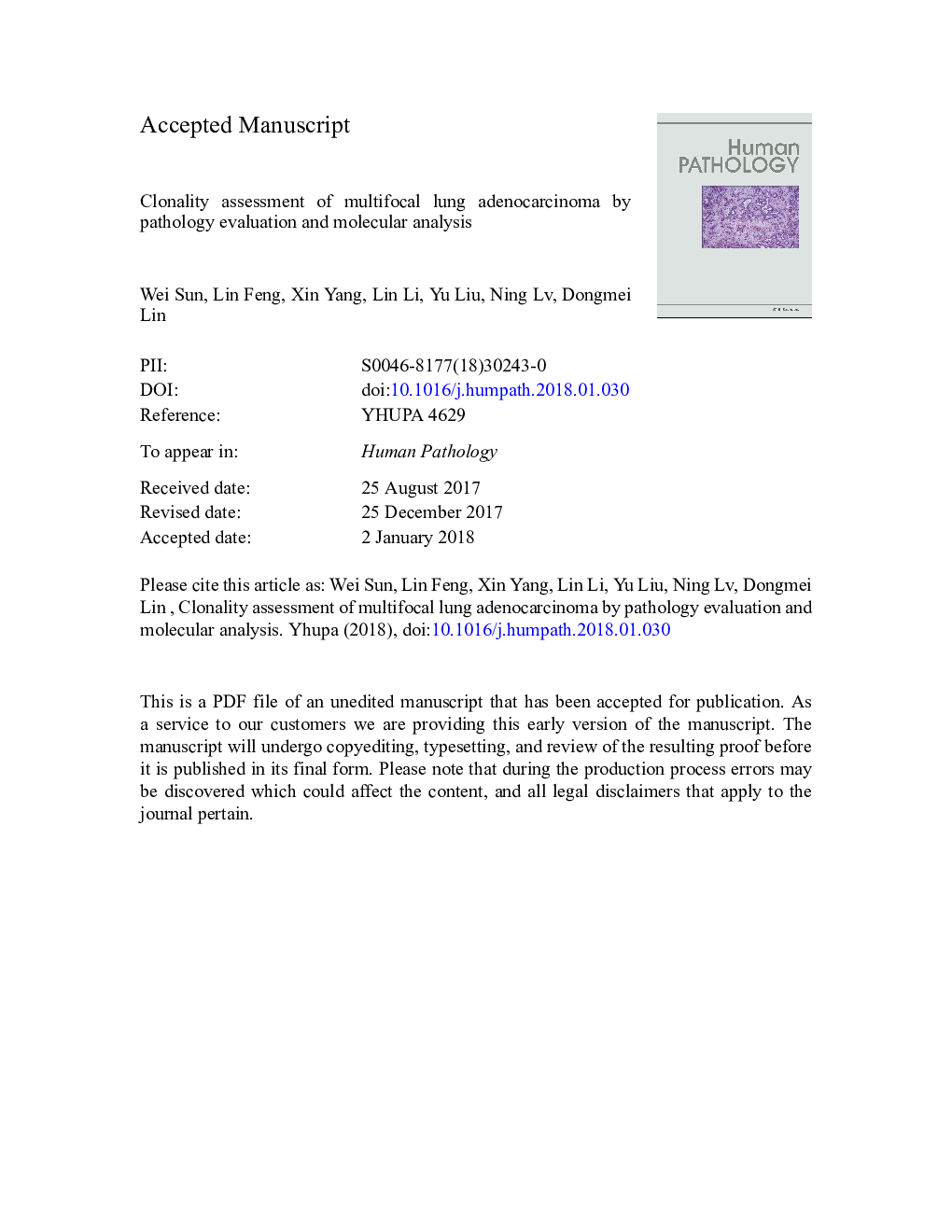| Article ID | Journal | Published Year | Pages | File Type |
|---|---|---|---|---|
| 11030548 | Human Pathology | 2018 | 37 Pages |
Abstract
The aim of this study was to explore morphologic and molecular features distinguishing between multifocal lung adenocarcinoma (MLA) and intrapulmonary metastases (IMs). Sixteen patients with MLAs, a total of 34 tumors, were reviewed. Four approaches were used: (1) array-comparative genomic hybridization (CGH) as a standard clonality assessment; (2) EGFR and KRAS mutational profiles as a supplementary method; (3) comprehensive histologic assessment (CHA) was method I in pathology evaluation; and (4) CHA combined with lepidic component analysis was method II. The lepidic component was divided into low grade and high grade according to extent of atypia; tumors with low-grade lepidic component were defined as primary. Eight patients were found to have IMs and 8 to have multiple primaries (MPs) by array-CGH; 7 had MPs and 9 had IMs by method I; 5 had MPs and 11 had IMs by method II. Compared with array-CGH, method I had a lower coincidence rate (65%) than method II (85%). Univariate analysis revealed that patients with MP had a better clinical outcome than those with IM only if the MPs were diagnosed by array-CGH (Pâ¯=â¯.034) or method II (Pâ¯=â¯.027) but not EGFR/KRAS mutation (Pâ¯=â¯.843) or method I (Pâ¯=â¯.493). Our results suggest that a low-grade lepidic component is a sign of a primary tumor. CHA combined with a low-grade lepidic component (method II) is more accurate clinically and more cost-effective in distinguishing MLAs from IMs. Also, EGFR mutation is not an appropriate molecular marker for clonality assessment.
Related Topics
Health Sciences
Medicine and Dentistry
Pathology and Medical Technology
Authors
Wei MD, Lin MD, Xin MD, Lin MD, Yu MD, Ning MD, Dongmei MD,
